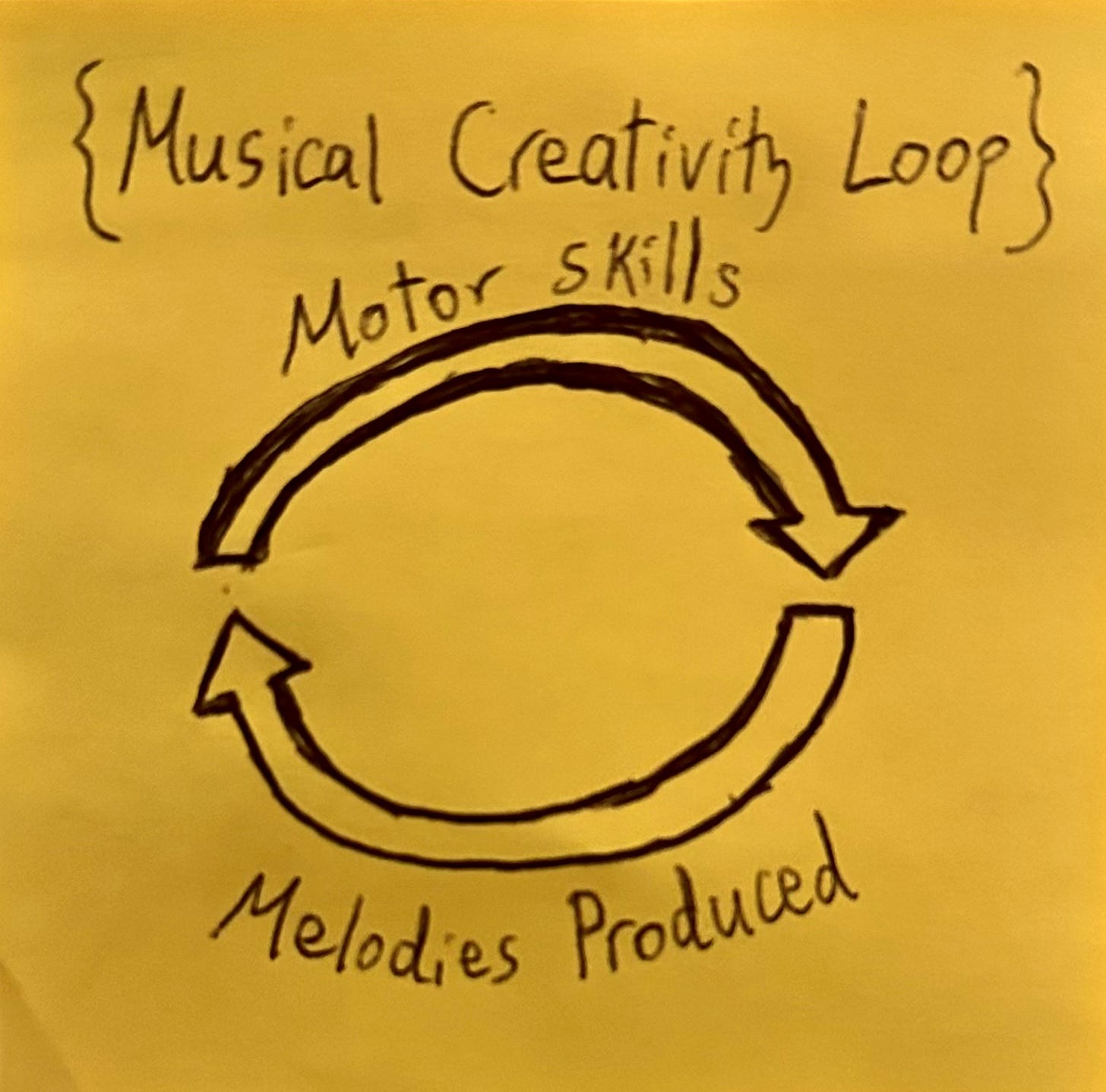Neuro Post-it 2: The Neuroscience of Musical Creativity
A new series of neuroscientific digestible insights! Written in collaboration with Cesca Centini.
Intuitively, music seems to be a purely auditory phenomenon. And this is mostly true from the perspective of the non-musician listener. However, from the perspective of the musician, music is just as motoric as it is auditory → this is ultimately where musical creativity arises. Here’s how:
Musical performers and composers have unique, refined motor skills that allow them to instinctively articulate and produce auditorily pleasing melodies. These motor skills are continually refined relative to the melodies they produce, creating a sort of ‘musical creativity loop’. [3] This is also partly the reason why musical artists often have a distinct style that pervades their compositions.
A non-musician listener of music subconsciously uses complex auditory-cognitive capacities, particularly in the superior temporal gyrus of the lateral temporal lobe, to make sense of the organizational structure in sound (processing elements such as melody, rhythm, and harmony) [1].
Conversely, a professional musician or improviser who hears and imagines a musical sound does so, as many studies and experiments have shown, not only through the use of auditory regions but also the motor regions of the brain such as the premotor and primary motor cortices, the cerebellum, and the supplementary motor area [2].
In fact, neuroimaging studies have demonstrated that musically-trained individuals who listen to music they haven’t ever heard before often automatically demonstrate activity in their premotor cortical areas. [3, 4] And what’s fascinating is that this premotor activity perfectly matches the sounds produced, as if they’re physically playing the song themself.
The reverse is also true: imagining motor patterns on an instrument stimulates auditory cortical activity. This is how many musicians today and throughout history—including legendary composers like Mozart and Beethoven—have composed their music; they envision playing certain melodies in their brains based on their knowledge of the keys on an instrument and the sounds they produce, writing these down as notes and ultimately producing their songs.
Essentially, music creation entails a complex interaction of dynamic signals between the auditory and motor areas that span different parts of the brain.
References:
[1] RJ;, Herholz SC;Halpern AR;Zatorre. “Neuronal Correlates of Perception, Imagery, and Memory for Familiar Tunes.” Journal of Cognitive Neuroscience, U.S. National Library of Medicine. Accessed 4 Jan. 2025.
[2] Bangert M;Peschel T;Schlaug G;Rotte M;Drescher D;Hinrichs H;Heinze HJ;Altenmüller E; “Shared Networks for Auditory and Motor Processing in Professional Pianists: Evidence from Fmri Conjunction.” NeuroImage, U.S. National Library of Medicine. Accessed 5 Jan. 2025.
[3] G;, Lahav A;Saltzman E;Schlaug. “Action Representation of Sound: Audiomotor Recognition Network While Listening to Newly Acquired Actions.” The Journal of Neuroscience : The Official Journal of the Society for Neuroscience, U.S. National Library of Medicine. Accessed 5 Jan. 2025.
[4] Gordon, Chelsea L, et al. “Recruitment of the Motor System during Music Listening: An Ale Meta-Analysis of fMRI Data.” PloS One, U.S. National Library of Medicine, pubmed.ncbi.nlm.nih.gov/30452442/. Accessed 24 Jan. 2025.
Co-written with






